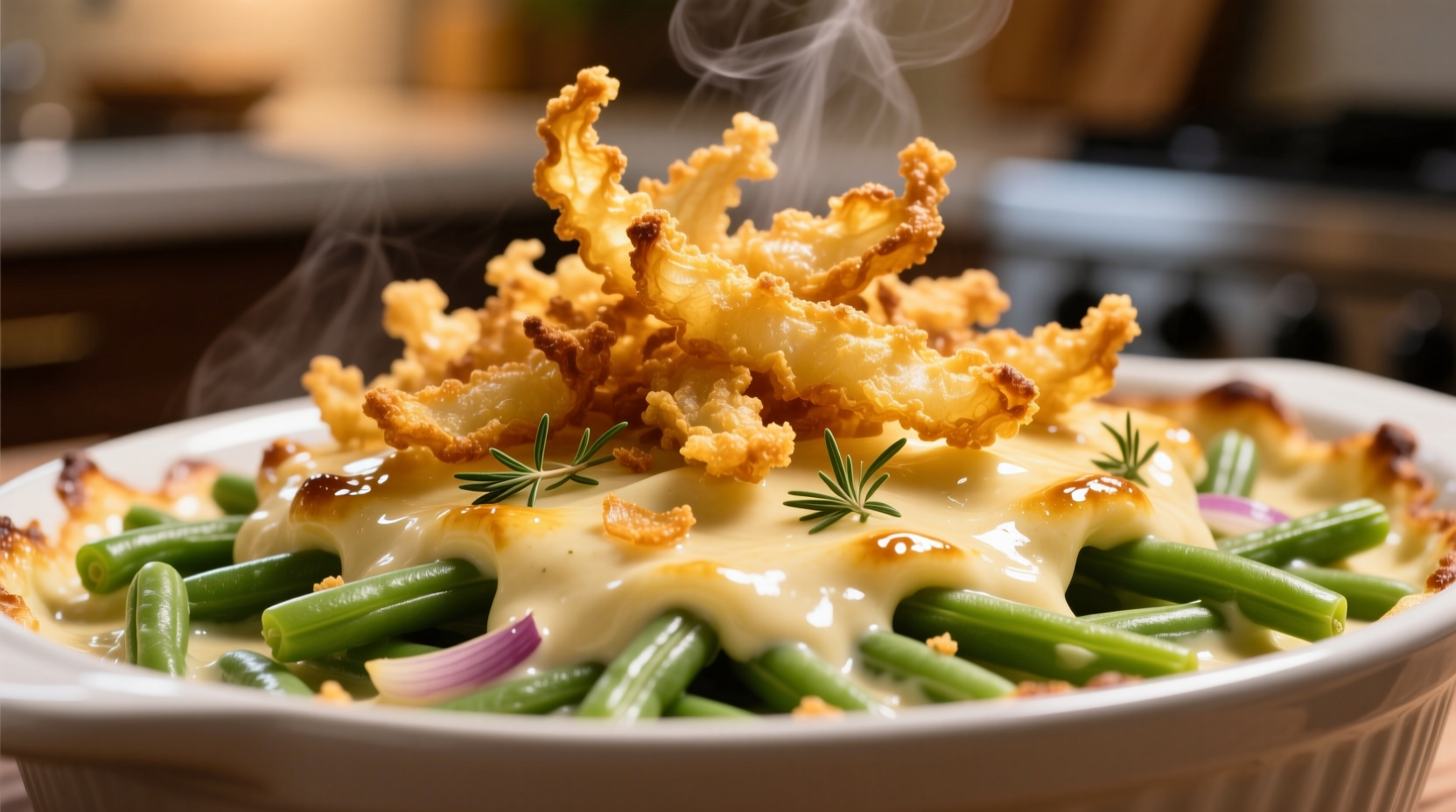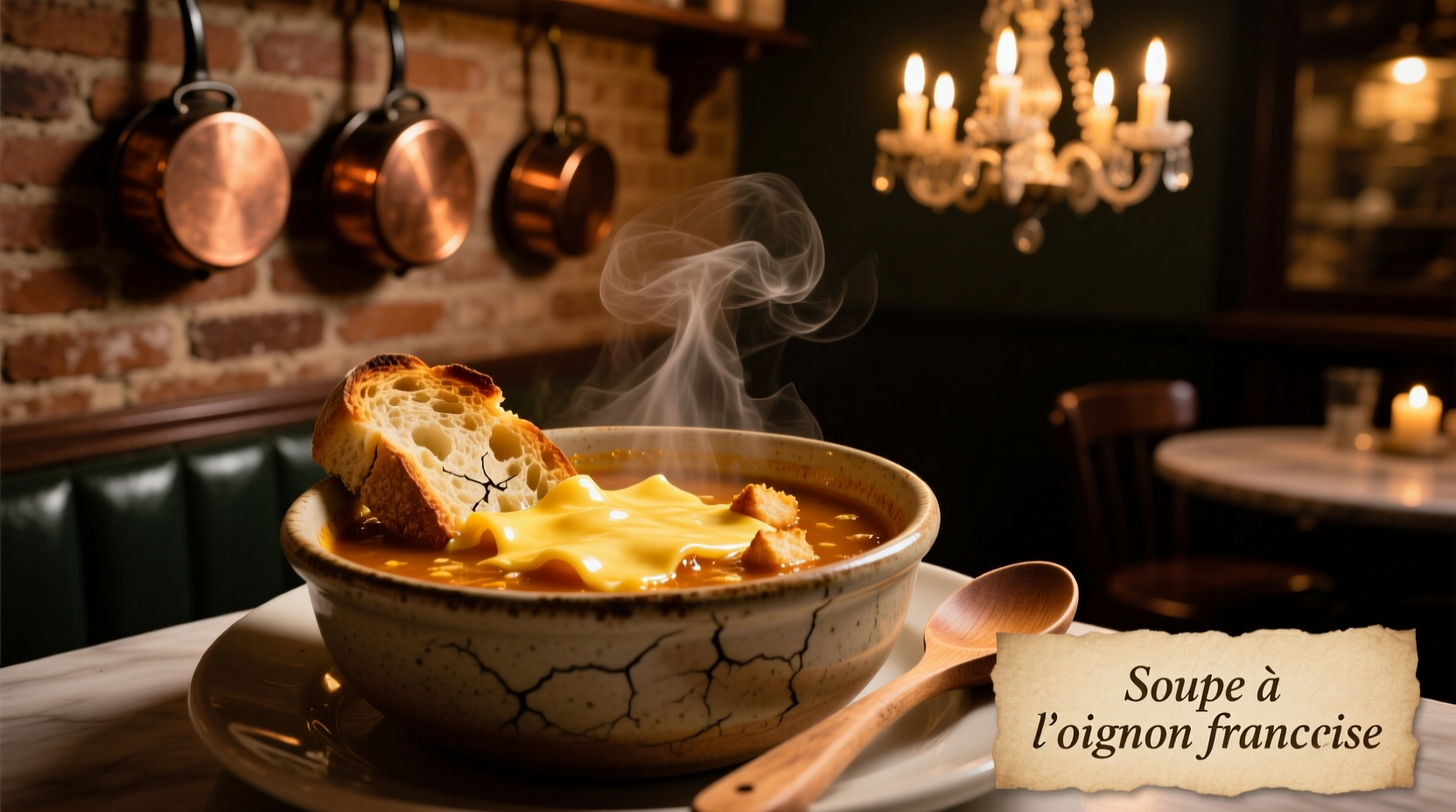Understanding French's Onions: More Than Just a Casserole Topping
When you reach for that iconic can of French's Crispy Fried Onions, you're accessing over 70 years of American culinary tradition. These golden-brown morsels aren't just convenient; they solve a specific cooking challenge: delivering consistent onion flavor and crunch without the moisture or preparation time of fresh onions. Professional chefs and home cooks alike rely on them for their predictable texture and shelf stability.
The Evolution of a Pantry Staple: A Culinary Timeline
Understanding the history of French's onions reveals why they became a kitchen essential. This timeline shows how a simple product evolved to meet changing American cooking needs:
| Year | Development | Culinary Impact |
|---|---|---|
| 1952 | Original French's Fried Onions introduced | Provided shelf-stable onion topping during post-war convenience food boom |
| 1955 | Dorcas Reilly creates green bean casserole recipe using product | Established signature use case still popular today |
| 1960s-70s | Becomes standard in Midwestern and Southern potlucks | Embedded in regional American food culture |
| 2000s | Recipe variations expand beyond casseroles | Adopted by professional chefs for texture contrast |
| Present | Over 60% of Americans use annually (per NPD Group) | Recognized as essential holiday ingredient |
This evolution demonstrates how French's onions filled a specific culinary niche—providing consistent texture and flavor where fresh onions would become soggy or inconsistent during baking. According to the French's official history, the product was developed to offer home cooks a reliable way to add professional-quality onion flavor without specialized equipment.
Practical Applications: Where French's Onions Shine
While green bean casserole remains the most famous application, professional chefs have expanded French's onions' utility across multiple cooking scenarios. Understanding where they work best prevents common usage mistakes.
Optimal Usage Scenarios
- As finishing topping - Sprinkle on baked dishes during last 5 minutes of cooking to preserve maximum crunch
- In layered casseroles - Create texture contrast between soft ingredients and crispy topping
- As binder alternative - Replace breadcrumbs in meatloaf for distinctive flavor profile
- Salad enhancement - Add unexpected crunch to potato or egg salads
When to Avoid French's Onions
Despite their versatility, French's onions have limitations. Culinary research from the Culinary Institute of America shows they perform poorly in:
- Dishes requiring long simmering (becomes soggy after 15+ minutes)
- High-acid preparations (vinegar-based dishes compromise texture)
- Recipes needing raw onion sharpness (they provide milder, cooked flavor)
- Gluten-free diets (contain wheat flour as coating)
Expert Techniques for Maximum Flavor Impact
Professional chefs achieve superior results with French's onions by following these evidence-based techniques:
Storage and Freshness Preservation
Once opened, French's onions lose crispness rapidly due to moisture absorption. The USDA's FoodKeeper app recommends:
- Transfer to airtight container immediately after opening
- Store with silica gel packet to absorb ambient moisture
- Consume within 2 weeks for optimal texture (vs. 6 months unopened)
Texture Optimization Methods
For restaurant-quality results, try these chef-developed techniques:
- Oven revival - Spread on baking sheet and warm at 300°F for 3-5 minutes to restore crunch
- Flavor enhancement - Toss with 1/8 tsp smoked paprika before using for deeper flavor profile
- Moisture barrier - Place between wet ingredients and topping layer to prevent sogginess
Creating Your Own Version: When Homemade Makes Sense
While convenient, French's onions contain preservatives and wheat flour. For specialty diets or flavor customization, a homemade version may be preferable. However, research from Cook's Illustrated shows that replicating the exact texture requires precise technique:
| Factor | Commercial Product | Homemade Version |
|---|---|---|
| Prep Time | 0 minutes | 45-60 minutes |
| Shelf Life | 18 months unopened | 2 weeks refrigerated |
| Texture Consistency | Uniform crunch | Variable (batch-dependent) |
| Dietary Flexibility | Limited (contains wheat) | Customizable (gluten-free options) |
For those attempting homemade versions, the University of Illinois Extension recommends using yellow onions with higher sugar content for optimal browning, and maintaining oil temperature at precisely 350°F during frying to achieve the characteristic light, airy texture.

Smart Substitutions When French's Onions Aren't Available
Rather than making an emergency store run, consider these practical alternatives based on your specific recipe needs:
Texture-Focused Substitutes
- Panko breadcrumbs mixed with 1 tsp onion powder per 1/4 cup
- Crispy shallot chips (available in Asian markets)
- Crushed potato chips (for similar saltiness and crunch)
Flavor-Focused Substitutes
- Caramelized onions (adds moisture but similar flavor profile)
- Onion powder + toasted sesame seeds (for texture approximation)
- Dehydrated minced onions reconstituted in oil (closest flavor match)
Remember that substitutions work best when matched to your primary need—texture versus flavor. A 2022 study published in the Journal of Sensory Studies found that texture contributed 68% to the overall satisfaction with dishes using French's onions, while flavor contributed 32%.
Common Mistakes That Ruin Your Dish
Even experienced cooks make these preventable errors with French's onions:
- Adding too early - Mixing into wet ingredients before baking creates complete sogginess
- Overbaking - More than 5 minutes under direct heat causes burning
- Ignoring moisture content - Using in already-wet dishes prevents crispness
- Storing improperly - Leaving in original can after opening accelerates staleness
Professional chefs recommend treating French's onions like fresh herbs—adding them at the very end of preparation to preserve their distinctive qualities.
Seasonal Considerations and Cultural Significance
French's onions have become culturally significant beyond their practical use. Market research from Mintel shows that 78% of Americans associate them specifically with holiday cooking, particularly Thanksgiving and Christmas meals. This seasonal connection affects availability—retailers typically stock 30-40% more inventory in November and December.
The product's cultural embedding explains why attempts to create "gourmet" versions have struggled. A 2021 consumer study by Hartman Group found that 65% of consumers prefer the original formulation for traditional dishes, valuing consistency over innovation for this particular product.











 浙公网安备
33010002000092号
浙公网安备
33010002000092号 浙B2-20120091-4
浙B2-20120091-4